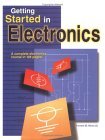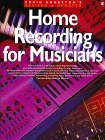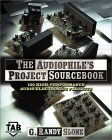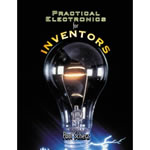Home > Studio Recording DIY Projects> Electronic Books
People have asked me what is a good book to read to start DIYing... On this page, I'll compile books that I have, read, or know will be good for the DIYer or electronics buff.
The following books are not expensive... the most expensive of the bunch is $55. But considering the knowledge you'll have (priceless), and the savings you'll realize when you build that super-duper preamp for a few hundred dollars rather than buying one and spending $1400, these books are a bargain.
These books link to Amazon.com. I'd appreciate it if you can buy your books by clicking on the links below :)
The
Art of Electronics
About the authors: Winfield Hill is Director of Electronic Engineering at the Rowland Institute for Science (founded by Edwin Land), where he has designed some 250 electronic instruments. Recent interests include high-voltage RF (to 15kV) and precision high-current electronics (to 6000A). He was formerly at Harvard University, where he designed over one hundred electronic and scientific instruments; he then founded Sea Data Corporation, where as chief engineer he designed some fifty oceanographic instruments. He has collaborated in numerous deep ocean experiments, and has authored a dozen scientific and technical articles. The history of the book according to the authors We first tried a few textbooks, of the "electronics for scientists" variety, but were unhappy with them all. None seemed to offer the intuitive "back-of-the-envelope" approach to electronic design -- that we favor. So we started writing (literally: in pencil, on paper, by hand) a set of "notes". (click here for a sample page.) These grew to some 200 pages, and acquired considerable popularity. People wanted copies, even if they weren't taking the course. After xeroxing a few hundred copies, we decided that there was a need for a real book, one that explained how real circuit designers design circuits. The scope of The Book (as we called it) grew enormously, with a large-format first edition of some 700 pages, extended to over 1100 pages, 1000 figures, and 80 tables in the second edition. * 1125 large format pages |
|
Getting Started in Electronics
The author is Forrest Mims, another well known author in the electronics world... up there with the likes of Horowitz. He has written several books and circuit scrapbooks. It's always interesting and a learning experience looking at his projects. The author teaches you the basics, takes you on a tour of analog and digital components, explains how they work, and shows you how they are combines for various applications. Includes circuit assembly tips and 100 electronic circuits and projects you can build and test. A reviewer at Amazon said it nicely... I cannot overstate
the impact this book has had in my life. Look at that... this reviewer just like me started in 7th grade... and yes, it has started our love for Electronics. |
|
Active Filter Cookbook
An active filter uses op amps, resistors, and capacitors. Advantages include lower cost, easy tuning, simple design, and modularity. Lancaster's Active Filter Cookbook includes practical elements such as working circuits, ready-to-use design tables, tuning, and real-world applications, making it easy to use and apply. You'll find both instant design and the mathematics behind it. What can you do with it? Build Filters! What else? EQ circuits, low-cut, low-pass, high-cut, bandpass, etc... now you can build your own dream EQ that rivals the EQ found on big mixing boards.
|
|
Craig Anderton's Home Recording for Musicians
I highly recommend this book. Yes, the pictures and screenshots are of vintage sequencers... but the underlying principle and explanation is still the same. The author is Craig Anderton... well known musician, engineer, writer... Just Google him to learn more about all his accomplishments.
|
|
The Audiophile's Project Sourcebook: 80 High-Performance Audio
Electronics Projects
Balanced input driver/receiver circuits |
|
Practical Electronics for Inventors (Paperback) Sometimes, after so much reading about electronics, you just get the itching to DO SOMETHING! Enough theory! Let's do something. Guess what? This is the book for you! Now, don't get me wrong... this book gives good, easy-to-understand theories (but not too deep) on the "whys" and "how" it works. If you want to learn electronics in a practical and hands-on manner, this is your kind of book. The book explains how each component works, and how the circuit functions. Of course, some basic knowledge of electronics is still useful, so if you don't have that, check the first 2 books I've listed above.
|





